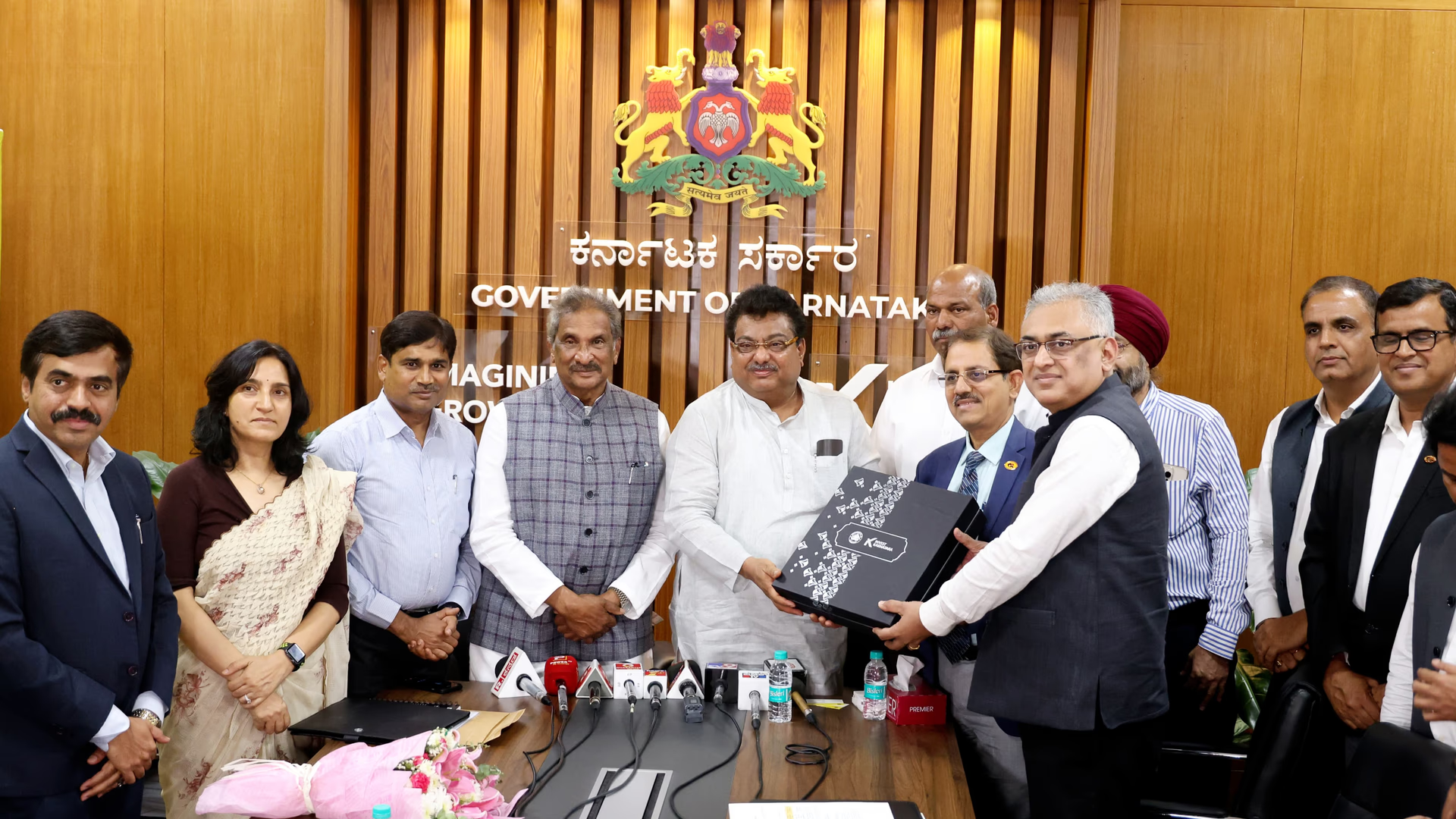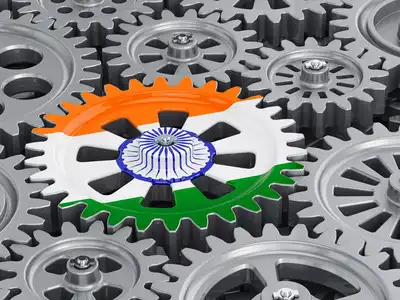manufacturers of all sizes to stay competitive in the global market.
According to the Indian Robotics Industry Report 2023, the Indian robotics market is expected to grow at a CAGR of 15% from 2023 to 2028, reflecting the rapid adoption of automation technologies in the country’s manufacturing sector.
What is Automation & Robotics in Indian Manufacturing?
- Automation involves using control systems (like computers or robots) to operate equipment in manufacturing plants with minimal human intervention. From assembly lines to packaging systems, automation has become a core part of manufacturing in India, enabling manufacturers to reduce human error and boost production speed.
- Robotics refers to the use of robots to carry out tasks that are repetitive, dangerous, or require extreme precision. In Indian factories, robots are increasingly being used for tasks such as welding, material handling, and inspection, where high accuracy is required.
Key Benefits of Automation & Robotics in Indian Manufacturing
- Boosting Productivity
The productivity of Indian manufacturing is significantly enhanced with the use of robots and automation systems. The continuous operation of these systems results in higher output without the need for breaks or downtime, a major advantage in a country where manufacturers face increasing demand pressures both locally and globally.
For instance, Maruti Suzuki, India’s largest car manufacturer, has incorporated automation in its production lines to increase efficiency and output. With robotics, Maruti Suzuki has improved its production capacity while ensuring precision in manufacturing. - Reducing Operational Costs
One of the key reasons Indian manufacturers are turning to automation is to reduce costs. Although initial investments in automation and robotics can be high, over time, the reduction in labor costs, fewer errors, and less downtime offer a significant ROI.
Bajaj Auto has implemented robotic systems in its manufacturing plants, which has helped in reducing labor costs and achieving higher operational efficiency. - Improved Quality & Consistency
Automation helps ensure that products meet high-quality standards with minimal variation. In India, where quality is a critical factor in competing globally, manufacturers are leveraging automation to improve consistency and meet international standards. Companies like Tata Motors and Hero MotoCorp use robotic systems to achieve high levels of precision in their manufacturing processes. - Enhanced Safety Standards
Safety remains a critical concern in Indian factories, particularly in high-risk areas such as welding, material handling, and assembly. Robots can perform hazardous tasks, thereby reducing the risk of accidents and enhancing workplace safety. This also addresses the growing concern about employee well-being in a country with a large industrial workforce. - Flexible Manufacturing Systems (FMS)
Indian manufacturers, particularly in the automotive and electronics sectors, are embracing Flexible Manufacturing Systems (FMS) powered by robotics. These systems allow manufacturers to quickly adapt to changing market demands, increase production volumes, and minimize costs, all while maintaining quality.
Emerging Trends in Automation & Robotics in India
- Collaborative Robots (Cobots)
Collaborative robots (cobots) are emerging as a game-changer in the Indian manufacturing landscape. Unlike traditional robots, which work in isolation, cobots are designed to work alongside human operators, enhancing productivity and safety. Indian manufacturers are increasingly adopting cobots in areas like assembly lines and material handling.
Companies like Larsen & Toubro and Bosch India are using cobots to collaborate with workers in assembly tasks, reducing the risk of workplace injuries while improving efficiency. - Artificial Intelligence (AI) Integration
The integration of AI with automation technologies is gaining traction in India. AI-powered robots can optimize processes in real-time, monitor performance, and predict maintenance requirements, significantly improving production efficiency. Wipro and Infosys are already incorporating AI and automation into their manufacturing and supply chain management systems. - Robotic Process Automation (RPA) for Office and Administrative Tasks
Robotic Process Automation (RPA) is increasingly being used for administrative and back-office tasks, such as invoice processing, inventory management, and supply chain monitoring. This trend is gaining momentum in India, especially in large manufacturing enterprises, which are looking to streamline operations across multiple departments. - 3D Printing and Additive Manufacturing
3D printing is being combined with robotics to offer advanced solutions for product prototyping, production, and customization. Indian manufacturers, especially in industries like aerospace and automotive, are adopting additive manufacturing to reduce waste and improve product designs.
Mahindra & Mahindra is utilizing 3D printing to manufacture custom components for its vehicles, reducing lead times and improving the accuracy of parts.
Challenges in Implementing Automation & Robotics in India
- High Initial Investment
Despite the long-term benefits, the high cost of setting up automation systems can be a barrier for Indian manufacturers, particularly small and medium enterprises (SMEs). However, the Indian government is taking steps to incentivize the adoption of automation through schemes such as the Production-Linked Incentive (PLI) scheme for key sectors like electronics and textiles. - Skilled Workforce
One of the major challenges India faces is a shortage of skilled workers who can operate and maintain automated systems. As automation adoption grows, the need for robotic engineers, AI specialists, and automation technicians becomes even more critical. Companies and institutions are working together to address this skills gap through training and certification programs. - Integration with Legacy Systems
Many Indian manufacturers still rely on legacy systems, which can make it difficult to integrate newer automation technologies. Ensuring compatibility between old and new systems is essential for maximizing the potential of automation. - Cybersecurity Risks
As Indian manufacturers increasingly rely on connected systems and IoT devices, the risk of cyberattacks grows. Protecting automated systems and robotic operations from cyber threats is critical, and businesses need to invest in cybersecurity infrastructure to ensure data security and operational continuity.
Case Studies: Successful Implementation in India
- Maruti Suzuki
Maruti Suzuki, India’s largest car manufacturer, has implemented a high degree of automation across its plants. The use of robotic systems for tasks such as painting, welding, and assembly has enabled the company to improve productivity, reduce defects, and meet the growing demand for cars in India and abroad. - Tata Motors
Tata Motors has adopted automation and robotics to improve its production processes, particularly in welding and body shop operations. The use of advanced robotics has allowed Tata Motors to ensure better precision in vehicle manufacturing, leading to better quality and faster production cycles. - Bajaj Auto
Bajaj Auto has invested heavily in robotics to streamline its manufacturing processes. The company uses automated systems for material handling, assembly, and quality inspection. This has not only improved operational efficiency but also reduced the time required to bring products to market.
Conclusion
The integration of automation and robotics is a critical strategy for Indian manufacturers looking to enhance operational efficiency, reduce costs, and stay competitive in both domestic and international markets. As AI, cobots, and 3D printing technologies continue to evolve, the scope for automation in Indian manufacturing will only increase, driving further growth and innovation.
For Indian manufacturers, the adoption of these technologies is not just about staying relevant but about positioning themselves for long-term success. By overcoming challenges like high initial investment, skills gap, and cybersecurity risks, India’s manufacturing sector can reap the full benefits of automation and robotics, paving the way for a more efficient, productive, and competitive future.









